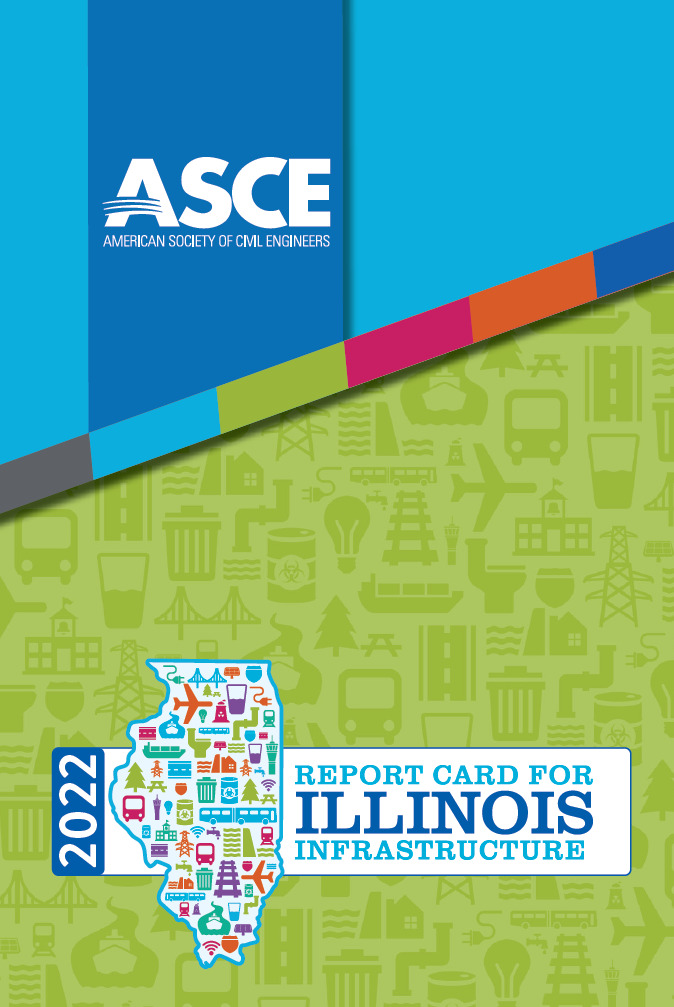2022 Report Card for Illinois’ Infrastructure
2022 Report Card GPA: C-
Whether we realize it or not, every person in Illinois uses infrastructure every day. From brushing our teeth, taking the train to work, or going to the grocery store, infrastructure is the backbone of our daily lives and communities. While we may not fully acknowledge it, the importance and condition of our infrastructure has a very real and direct impact on every person, business and community. We all depend on roads and bridges to get us where we are going, pipes that delivers clean water to our taps, and a network of inland waterways, ports, rail, and transit to move goods and people. These systems drive and improve our economy and subsequently, our lives.
The crossroads of our country’s rail, air, roadway and waterway systems run through Illinois which provides our state with a unique competitive economic advantage that should be protected and enhanced. The last few years have shown that investing in our infrastructure has benefits. From the Rebuild Illinois Capital Plan and low interest loans for drinking water and wastewater projects to the recently passed Federal Infrastructure Investment and Jobs Act, infrastructure funding has increased grades for several categories while laying the critical foundation for investment in our future over the next decade. These investments will help Illinois capitalize on our geographical advantages, which in turn will create and promote growth for our state’s economy and citizens. However, we cannot become complacent. There is still significant underinvestment in several categories that threaten our competitive advantage and the health, safety and welfare of our citizens. We need to continue the momentum of investing in the infrastructure engine that drives our lives and economy.
The Report Card was created to help every citizen, stakeholder and decision-maker in Illinois understand the state of our infrastructure and where we can collectively work to improve it. As civil engineers, our role in society is to plan, design, construct, and maintain our infrastructure networks and this document allows us the opportunity to share that information with the public. This infrastructure snapshot enables us to track how our investments are doing while engaging in conversations about where we want to be going in the future. We hope that this information provides the insight needed to start that conversation and ignite action.
Click here to read the Illinois’ Report Card executive summary.
-
Explore Illinois
- Grades
- State Fact Sheet
- IIJA Grants
Illinois Infrastructure Grades
A: Exceptional, B: Good, C: Mediocre, D: Poor, F: Failing
Each category was evaluated on the basis of capacity, condition, funding, future need, operation and maintenance, public safety, resilience, and innovation
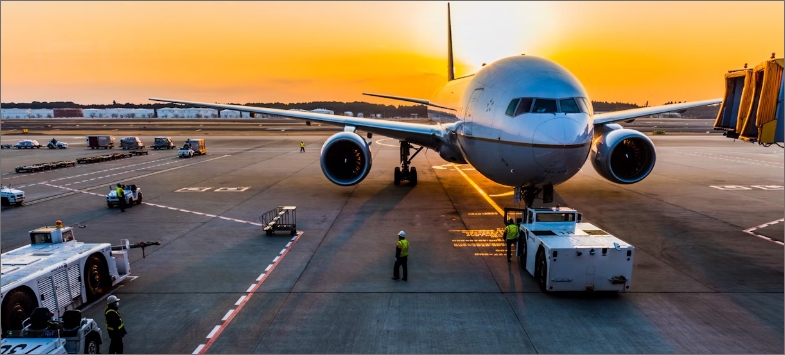

Aviation
Illinois’ airports are a gateway for approximately 6 million passengers and 10 billion pounds of air cargo annually. To keep these people and cargo moving, airports require significant infrastructure investment. Fortunately, Illinois’ largest airport has seen this investment in recent years with the substantial completion of the $6 billion O’Hare Modernization Program. Outside of Chicago, $94 million in funds are expected to be released as part of the Rebuild Illinois Capital plan signed into law in 2019. These funds provide a state/local program that complements existing federal funding for public-use airports. Despite this increased investment, much more is needed to improve Illinois’ aging aviation infrastructure. Only 61% of Illinois’ runways and 58% of Illinois primary taxiways are in good condition. Illinois needs $6.5 billion in investment over the next five years to keep up with infrastructure needs, and airports continue to struggle to find funding sources for these projects.
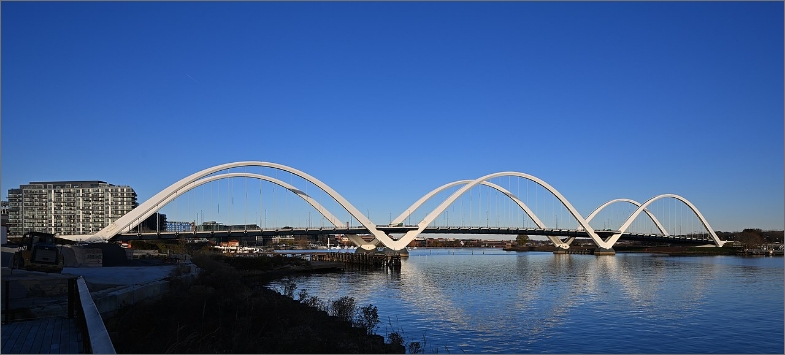

Bridges
Bridges connect our communities and economic centers. Illinois has the 3rd largest bridge inventory in the nation and a significant backlog of needed maintenance. Currently, there are 2,405 bridges in poor condition – or 9% of all bridges in the state that are crossed by motorists every day in Illinois. Approximately 70% of Illinois bridges in poor condition are owned by counties, towns, or cities, suggesting the local maintenance backlog is a significant challenge. Fortunately, the future is bright. The Illinois Department of Transportation recently revised their guidance to emphasize continuous bridge maintenance rather than waiting until a bridge needs major rehabilitation, which is a more cost-effective approach to bridge management. Additionally, the state legislature passed the Rebuild Illinois Capital Plan, which is the largest capital program in the state’s history and will provide nearly $5 billion over six years to bridges, including those on the local system. Finally, $1.4 billion in bridges-specific funding is now available for Illinois from the federal Infrastructure Investment and Jobs Act. These investments should meaningfully reduce the state of good repair on Illinois bridges in the coming years.
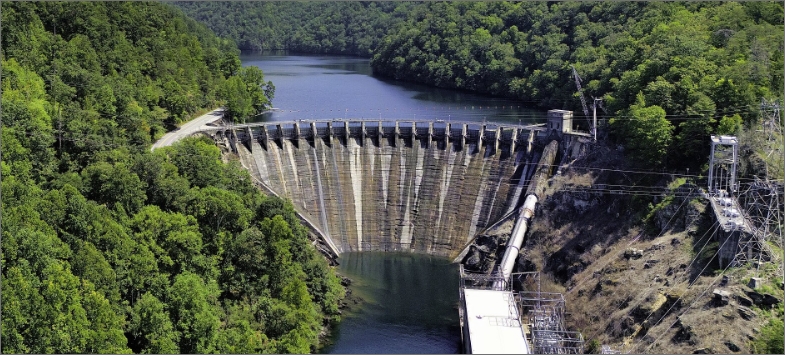

Dams
There are 1,892 dams in Illinois, the majority of which support recreational activities. The construction, operation, maintenance, repair, inspection, and removal of dams are the responsibility of the dam owner. Currently, Illinois does not have a state loan or grant funding program to assist dam owners with rehabilitation of dams. Over half of the dams classified as having a high hazard potential are privately owned, which equates to about 252 dams. Today Illinois has four full-time employees (FTEs) dedicated to dam safety, up from three in 2018. There are 63 high hazard potential dams per FTE, down from 75 in 2018. Investment in the removal of aging low head dams has increased, helping restore river ecosystems and opening opportunities for recreation. Hydropower generates less than 1% of the state’s energy needs and it is not expected to increase significantly, but future innovation could help increase that amount.


Drinking Water
Drinking water systems are essential for public safety and quality of life. Unfortunately, Illinois groundwater resources are becoming depleted and the number of community water supply systems in violation of one or more of the U.S. EPA’s drinking water compliance programs is also up significantly since 2018. Also of major concern is that out of 4 million total service lines, over 675,000 have been identified as lead and almost 380,000 as copper with lead solder services. Fortunately, financial assistance for these challenges is on the way. Approximately $288 million is provided by Congress in FY22 for Illinois water infrastructure, more than double the amount awarded in FY21. Additionally, the Illinois EPA (IEPA) is assisting communities with the replacement of lead service lines by allowing a one-time, $95 million transfer of wastewater loan funds to the drinking water loan program. Those funds will be solely dedicated to lead service line replacement activities in FY 21 – 23.


Inland Waterways
Illinois has 1,118 miles of navigable inland waterways passing through or bordering the state. With 29 river locks, 350 active ports, and the nation’s only all-water connection between the Great Lakes and the Mississippi River system, Illinois’ inland waterways network is key to the future of marine and intermodal freight movement throughout the Midwest. In recent years, significant increases in federal funding have allowed for the completion of several large maintenance projects on both the Mississippi River and the Illinois Waterway and meaningful improvements to the condition of the inland system. However, freight traffic is forecasted to increase 50% over the next 30 years. It is critical that there is continued investment in lock and dams to sustain current usage but to also meet future capacity demands to ensure that Illinois’ crops and commodities reach markets in a timely and cost-effective manner.
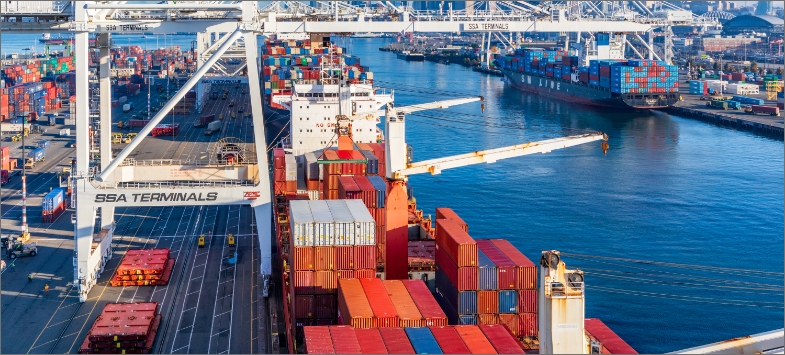

Ports
With a total of 1,118 miles of inland navigable waterways from Mississippi, Ohio, Kaskaskia and Illinois rivers, including the Chicago Area Waterway System, 19 public port districts and over 400 private terminals, Illinois is the freight epicenter of the nation. Nearly all Illinois ports have sites available for industrial development within their jurisdiction as they provide access for multimodal transportation. Generally, waterway infrastructure needs to be improved along the entire Mississippi River System and the Great Lakes inland waterways to ensure reliable freight movement. Accordingly, in the Spring of 2019, the Rebuild Illinois Capital Bill appropriated $150 million to IDOT for the Illinois Port Facilities Capital Investment Grant Program with the rest of the funding – an overall $33.2 billion – going to other forms of the state’s aging transportation system.
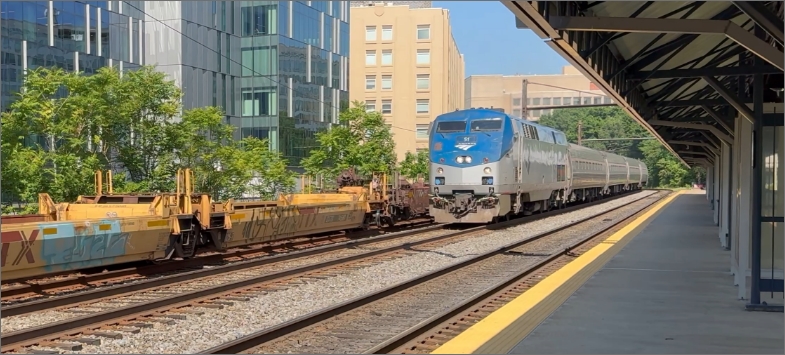

Rail
Illinois is at the heart of the North American rail network, and nowhere else in the country do all seven Class I railroads converge and operate. The nearly 7,000 miles of Class I track play a key role in moving goods and people throughout the continent. However, parts of the Illinois rail system are well over 100 years old, and substantial investments are needed to accommodate growing freight traffic, which is forecasted to double from 2017 to 2025. Chicago remains extremely congested, with an estimated 500 freight trains and 760 passenger trains passing through the region every day. The CREATE program, an innovative public-private-partnership, aims to improve rail network speeds and eliminate rail-rail and rail-highway chokepoints in the Chicago region. CREATE includes more than 70 projects at a capital cost of $4.6 billion that will generate an estimated $31.5 billion in economic benefits when completed. As of 2021, 31 out of 70 projects have been completed. More recently, St. Louis has grown into the nation’s third busiest rail and multimodal hub. To ease congestion, that region has developed a list of 21 priority capital freight projects estimated at $2.75 billion.


Roads
Roadway conditions are improving in Illinois. The percentage of state-maintained highways in excellent condition grew 5.2% in 2020 when compared to 2019, as the state DOT began investing the additional revenue provided by Rebuild Illinois. Congestion remains a challenge. The Chicago region reported a travel time index of 1.29 in 2019, meaning during peak hours it takes nearly one-third longer to make a given trip. This was a minor improvement from 1.32 in 2017. Available funding for the surface transportation network has grown substantially thanks to Rebuild Illinois and the federal Infrastructure Investment and Jobs Act. However, the outlook for long-term, sustained revenues indicates these gains may be short-lived. With commitments being made to reduce carbon emissions and eliminate production of internal combustion engines by 2030, a steep decline in fuel tax revenues is anticipated. Additionally, the recent adoption of increased rainfall intensities highlights the inadequacies of drainage systems designs which leads to an overall loss of resiliency for the system’s capacity.
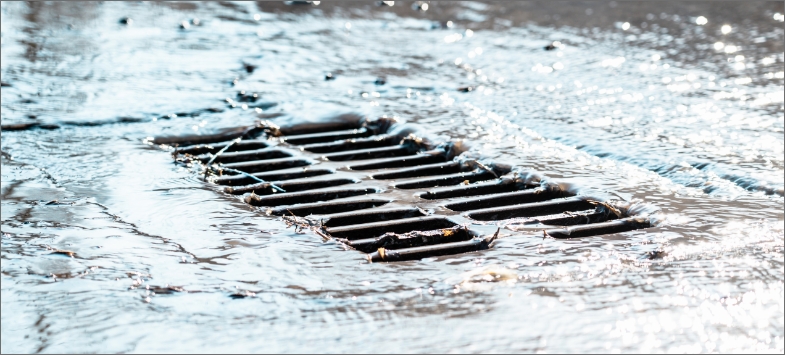

Stormwater
Illinois’ extensive network of legacy stormwater infrastructure was built to protect nearly 13 million residents, property, and the environment from flooding. Unfortunately, many of these systems are aging and undersized based on current rainfall standards and, when subject to increased rainfall trends from climate change, are likely to be woefully inadequate. The U.S. EPA estimated Illinois’ most recent stormwater management need at $88 million in 2012, and without significant federal investment, this gap has certainly increased. To try to bridge the funding gap, 29 municipalities now have stormwater utilities that can collect fees for maintenance and upgrades to their stormwater systems. These stormwater utilities charge an average of $5 monthly per household, less than the national average of $5.87. With population growth, rainfall trends expected to increase, and billions of dollars in urban flood damages reported, Illinois’ current stormwater systems will not have sufficient capacity to meet future needs and protect residents. Additional funding and resources will be needed to repair, upgrade, and/or replace these systems and seize the opportunities to improve stormwater management in Illinois.
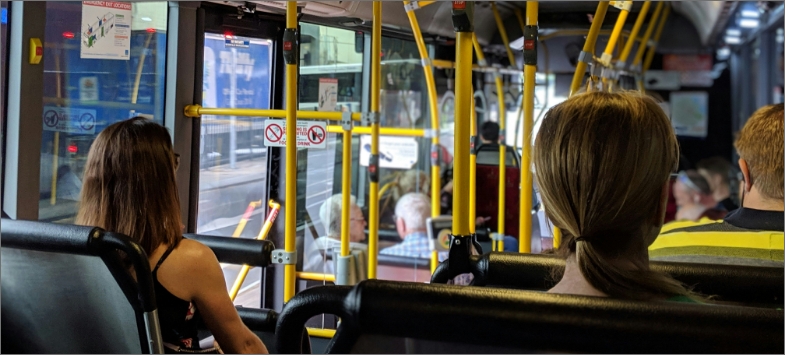

Transit
101 out of Illinois’ 102 counties offer transit service, and 57 public transit operators and providers supported an estimated 600 million trips in 2019. Much of the infrastructure for a world-class transit system, particularly in northeastern Illinois, is in place. Unfortunately, the State’s transit infrastructure suffered for many years with inadequate funding. Current multi-year capital needs for transit in northeastern Illinois require an annual funding level of approximately $2 billion to bring the system back into a state of good repair and undertake limited modernization, enhancement, and expansion initiatives. However, for many years, state and federal capital funding was only providing approximately half of what was needed to modernize systems. Fortunately, federal investment has grown the last few years, and the State enacted the Rebuild Illinois program, investing in transit infrastructure. The funding to improve the condition of the infrastructure has begun to flow. For example, in 2022, Metra is budgeting operating expenses of $900 million, which is $100 million or 12.5% higher than in 2021.
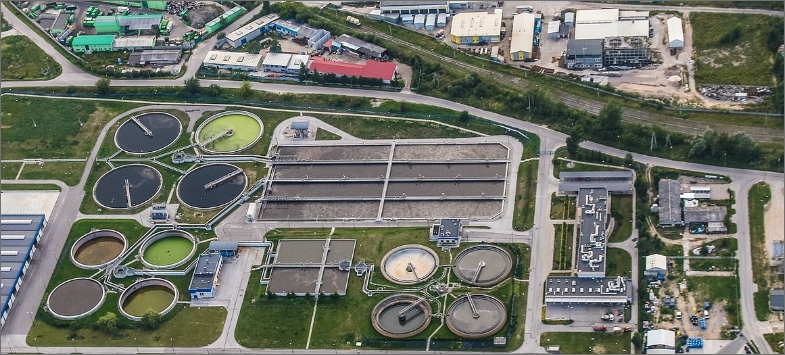

Wastewater
Approximately 85% of Illinois’ residents are served by more than 800 wastewater treatment facilities and 690 wastewater collection systems; the remaining residents rely on septic systems. Adequate prioritization of Illinois’ wastewater infrastructure is vital to protecting our abundant water resources and providing a safe and clean resource for all users. Unfortunately, deficiencies in Illinois’ wastewater infrastructure poses a threat to our water resources. The Environmental Protection Agency (EPA) determined in 2016 that a total of $6.5 billion was necessary to meet the water quality and water-related public health goals of the Clean Water Act. To help communities with inadequate or nonexistent wastewater collection and treatment facilities, $20 million per year is now available through the Illinois Environmental Protection Agency’s (IEPA) Unsewered Communities Grant Programs to assist communities with new wastewater facility construction grants. Meanwhile, communities are investing to avoid combined sewer overflow events. In 2017, there were 37 CSO events reported in Chicago while in 2020, only 19 CSO events were reported.
State Fact Sheet
Download Fact Sheet
Aviation
$99.8 million in 2024 airport improvement grants across 15 major airports

Drinking Water
$22.2 billion total drinking water need

Transit
322 million passenger trips across 67 systems in 2023

Bridges
26,928 bridges, 9.3% of which were structurally deficient in 2024

Hazardous Waste
70 Superfund sites

Wastewater
$7.5 billion total wastewater need

Dams
250 high hazard dams

Levees
2,161 miles of levees protect $16.5 billion of property.

Roads
41% of roads are in poor or fair condition

Connect with Your Legislators
Let everyone know how important it is that we continue to invest in the future of America’s infrastructure.
Take Action Today


